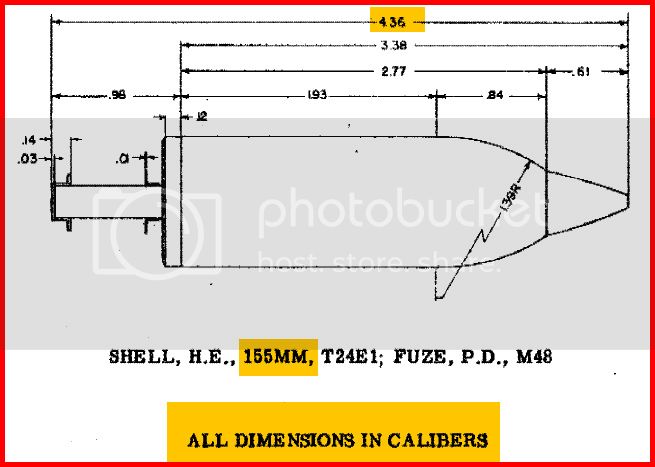The problem is that the word caliber, or the abbreviation cal, is used in two ways.
For small arms it is used to denote the diameter of the barrel, .50 cal means half an inch, a 38 Smith & Wesson has a barrel diameter of 0.38 inch et.c. Then there are different names for different sizes of the shells, the size of the gun powder load et.c. Note that in this usage there should be a decimal point in front of the numbers, saying 38 S&W should actually be 0.38 S&W but people are lazy ....
For larger weapons caliber is used to denote the length of the barrel as a multiple of barrel diameters so a 52 cal barrel for a 155 mm gun has a length of 52 x 155 mm = 8.06 meters. Note that the caliber of the barrel is 155 mm.
The measurements in your drawing above all refer to the caliber as a sort of measurement unit, the shell could theoretically be re-scaled to another weapon with a different bore or barrel diameter.
As a side note, I found this when I Googled howitzer caliber:
"Current U.S. military doctrine defines howitzers as any cannon artillery capable of high-angle (45° to 90° elevation) and low angle (45° to 0° elevation) fire; guns are defined as being only capable of low-angle fire, and mortars only capable of high-angle fire"
https://en.wikipedia.org/wiki/Howitzer To confuse matters further there is the British way of using shell weight to define the caliber ....
/ Robin


























